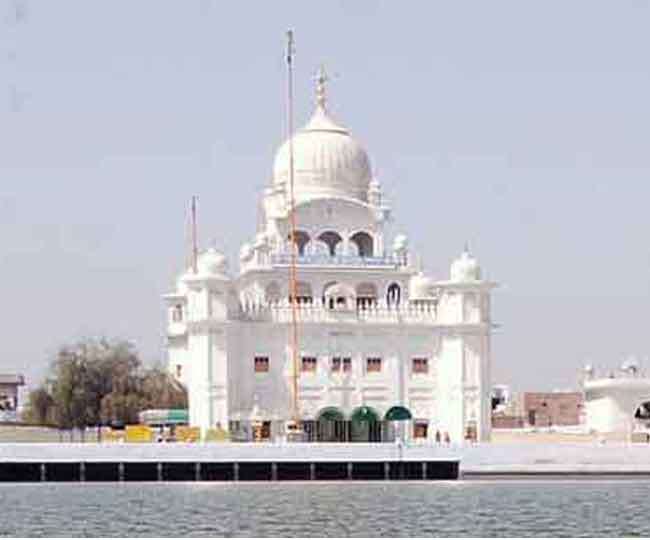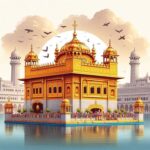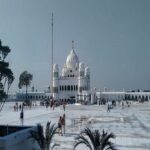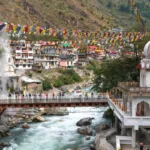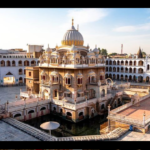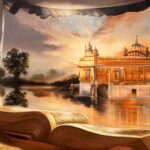Sri Muktsar Sahib (/ʃriː ˈmʊktsər saːhɪb/) (often spelled Muktsar (/ˈmʊktsər/)) is a town and the district headquarters for Sri Muktsar Sahib District, located in Punjab, India. According to the 2011 India census, the total population of Sri Muktsar Sahib municipality was 117,085, making it the 14th largest city in Punjab in terms of population. Historically known as Khidrana or Khidrane di dhab, the town became the district headquarters in 1995. Chronological evidence suggests that the town was named Muktsar after the Battle of Muktsar in 1705. Guru Angad Dev Ji was also born here. The government officially changed the city’s name to Sri Muktsar Sahib in 2012,[2] although the city is still primarily referred to by its unofficial name – Muktsar.
Early history
The modern city of Muktsar was historically a semi-desert terrain called Khidrana or Khidrane de dhab, located near a lake. Not much is known about the early history of the current area of the city. This may be partly due to the Sutlej River. The Sutlej is famous for changing its course and is said to have flowed as far east as Muktsar in historical times. As the stream shifted, it is said to have razed everything in its path, leaving behind ruins and heaps of clay and pottery. The present-day Muktsar area is almost entirely devoid of ancient buildings and contains no sites mentioned in early records. Legends associated with Raja Sálbán are associated with one or two other ruined sites near Muktsar, such as Sarai Naga, 10 miles (16 km) east of Muktsar. But the city does not come from an earlier period than the reign of Akbar.
Medieval history
The territory of which Muktsar is now a part was formerly ruled by the Paramara Rajputs, who held it for a considerable period. Jiwa moved to the Muktsar district where his descendants held a group of villages and his grandson Abdulla Khan became Zaildar of Muktsar.
About the time of the first Muslim conquests of India, a colony of Bhati Rajputs, whose tribes are the Manj, Naipal, and Dogra Rajputs, came from Jaisalmer under a leader called Rai Hel and settled south of the present town of Muktsar. They overcame the local Paramara chief and established themselves. Burar had two sons, Paura and Dhula, the younger of whom owned almost the entire region of Muktsar. Many of these Bhati Rajputs followed the Sikh Gurus and later embraced the Sikh faith in the times of Gobind Singh. These Bhati Rajputs are known to have fought against the imperial Muslim armies alongside Gobind Singh.

During the disintegration of the Delhi empire, the country, which appears to have become almost depopulated, was occupied by various clans of Rajput origin, which are still prominent among the inhabitants of Muktsar.
In this district many people have converted descendants of the Chauhans of Delhi, who some years ago emigrated to the neighborhood of Pakpattan; and thence, two centuries ago, it extended for a hundred miles along both banks of the Sutlej from a few miles above Ferozepur to the borders of Bahawalpur. They were at one time the undoubted lords of Mamdot and Khai, as well as Ferozepor including the present region of Muktsar; their seats were chiefly at Khadir of the Sutlej, and their occupations were pastoral and predatory.
In March 1504, the second Sikh Guru, Guru Angad Dev, was born at Matte-di-Sarai (now called Sarai Naga), about 6 miles from Muktsar. His father Bhai Pheru was a businessman Trehan Khatri and his mother Ramo was a housewife.
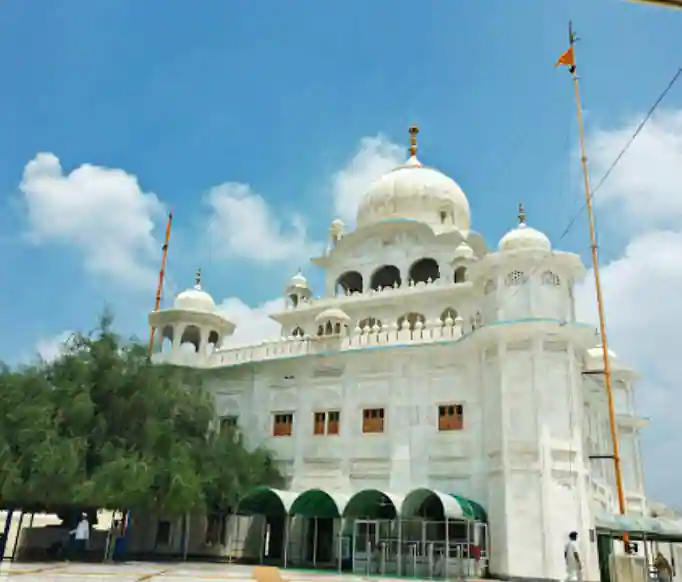
Battle of Muktsar
Artist’s rendering of the Battle of Muktsar, 1705
In 1705, after the Battle of Chamkaur against the Mughals, Guru Gobind Singh began to look for a suitable place from where he could regroup his forces and fight the Mughal forces, which were now supported by the Dogra hill chiefs. With the help of the skilled guidance of the Brar chief, Guru Khidrane reached Di Dhab, where he finally decided to meet the enemy. He received news of imperial troops, at least 10,000 strong, under Wazir Khan, the subedar of Sirhind, in pursuit. Earlier, in 1704, when Guru Gobind Singh’s army was treacherously besieged at Anandpur Sahib by Moghul forces, supported by the Dogra hill chiefs, the Sikhs ran out of supplies. Some historians believe that 40 Sikhs from the Majha area of Chabal deserted the Guru. Historians believe that the Guru asked them to write a formal declaration that they no longer wished to fight alongside Guru Gobind Singh. However, these 40 deserters realized their mistake in deserting him and under the encouragement of Mai Bhago returned to join the Guru’s forces at Mukatsar. Guru Gobind Singh also sent reinforcements, although the number of Sikh soldiers is disputed. Historians such as Latif put it at 12,000, although Sikh chroniclers say it was much less, some say as many as forty. They rained arrows from his strategic position on the knoll down on the imperial army, killing many of them. Sikh resistance intensified. The enemy became restless due to a lack of water. They couldn’t reach Lake Khidrana. As it was a semi-desert terrain and the summer heat was at its peak, the Guru knew its importance and based his defenses around a water reservoir. The only water they could get was fifteen miles behind them. Thirst and the oppressive heat and stiff resistance offered by the Sikhs forced the Mughal army to retreat. Guru Gobind Singh won this last Mughal-Khalsa battle which resulted in heavy casualties. At the end of the battle, while searching for survivors, Mai Bhago, who was lying wounded, told him how forty deserters had given their lives fighting on the battlefield. Mai Bhago recovered and remained in the Guru’s presence after the battle of Muktsar. When Guru Gobind Singh (and Bibi Sharanjit Kaur), along with his Sikhs, were collecting dead bodies for cremation, he found a man named Mahan Singh who was still clinging to life. Seeing the Guru, he tried to get up; The Guru immediately embraced him and sat down with him. Mahan Singh, tearful and exhausted, asked the Guru to destroy the document claiming to be a Sikh from the Guru. Before Mahan Singh died, Guru Gobind Singh took the document and tore it.
